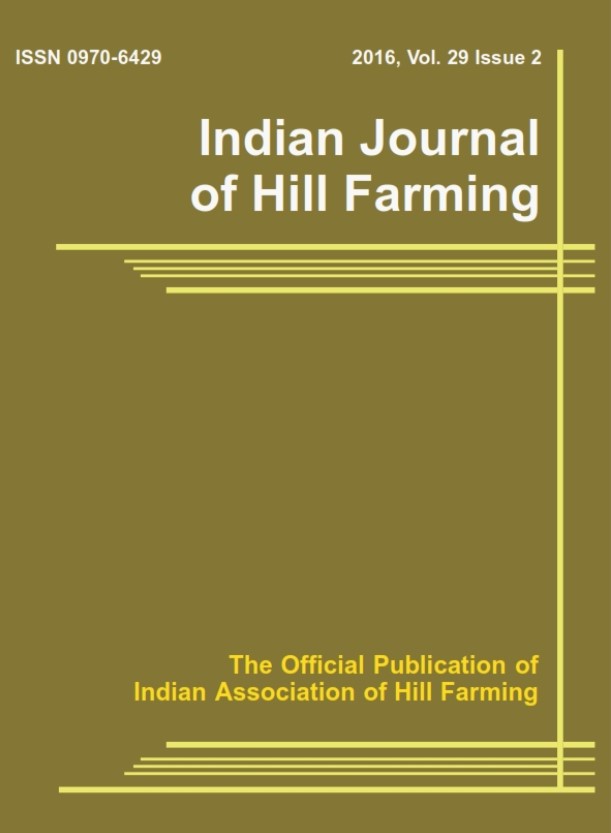Stability analysis for yield and yield component traits of winged bean
DOI:
https://doi.org/10.56678/iahf-2022.35.02.28Keywords:
Stability, Winged bean, AMMI biplot, Mizoram, MeghalayaAbstract
Winged bean is an underutilized nutrient-rich legume that offers great importance in food security under climate change. Despite its importance, stable high-yielding varieties across a wide range of environments are unavailable for commercial cultivation. A study involving a proper understanding of genotypes and Genotype × Environment interactions (GEI) on yield and yield component traits to identify best-performing stable genotypes across different environments is crucial. Eleven genotypes of winged bean were characterized and evaluated in two locations for two years (2020 & 2021) following a randomized block design with three replications. Characterization of genotypes showed varying leaf shape, leaflet size, pod surface, pod shape, seed colour, and seed shape. The genotype ‘MZWB-L2’ performed significantly better than all the checks in the study with exceptionally longer green pod length 47.97 cm, 3.60 cm green pod width, 110.76 g green pod weight, 55.67 no. of pods/plant, 19.04 no. of seeds/pod, 6.25 kg green pod yield/plant and 391.20 g seed yield/plant. Highly significant differences were observed due to genotypes, environments, and GEI. Based on the AMMI model, the first and second component explained more than 92% of the interaction variation. The genotype ‘MZWB-L2’ exhibited maximum trait value in different environments with specific adaptability. Moreover, this genotype is found suitable for commercial cultivation under specific environments and as a suitable parent for crop improvement. The two genotypes ‘MZWB-L1’ and ‘RWBGP-96’ are less affected by GEI, exhibiting general stability and performing satisfactorily for yield and yield component traits. Thus, genotypes MZWB-L2, MZWB-L1 and RWBGP-96 are considered suitable for cultivation in the Northeastern hill region of India.




